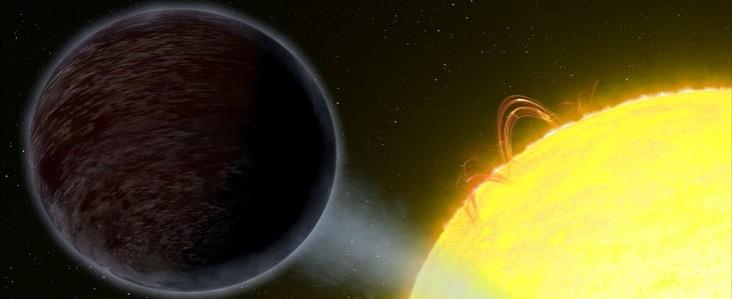
A new planet named WASP-104b is so black, it is one of the darkest ever to be observed. It absorbs 99 percent of all light that hits it, making it blacker than charcoal, almost as dark as Vantablack.
This planet is also a hot Jupiter, meaning it is a gas giant with around the same mass as Jupiter, but orbit close to their stars. So close, in fact, that one revolution will take less than 10 Earth-days, notes a report by ScienceAlert. Hot Jupiters are also extremely hot because of how close they are to their home stars.
On their own, hot Jupiters are not a rarity, but they have a number of strange properties that are common among them. One such quirk is that they are normally quite dark. In spite of being so close to their stars, these gas giants reflect only about 40 percent of the starlight that reaches them. On rare occasions, astronomers might find a planet that is really dark. Last year, a new planet WASP-12b was found to absorb about 94 percent of all light that reached it.
"From all the dark planets I could find in the literature, this is top five-ish," said lead researcher and astrophysicist Teo Mocnik at Keele University. "I think top three." The reason why this planet is so dark can be explained by how close it is to its host star, notes the report. This star is about 466 light years away, notes the report, in the constellation Leo.
The planet is tidally locked to its star, so there is permanent daytime on one side and permanent night on the other and it takes only 1.75 days to complete an orbit around its yellow dwarf host, being only 4.3 million km from it.
As a result, it is too hot at WASP-104b to form ice and clouds- two things that make for highly reflective surfaces. Instead, the planet has a thick, hazy atmosphere- one that is likely made of atomic sodium and potassium, both of them are known to absorb visible light.
However, the report mentions that the blackness of this planet is unlikely to be matte black like charcoal or pitch black like Vantablack, rather, because of the high heat environment, it is likely to have a glow about itself.

















